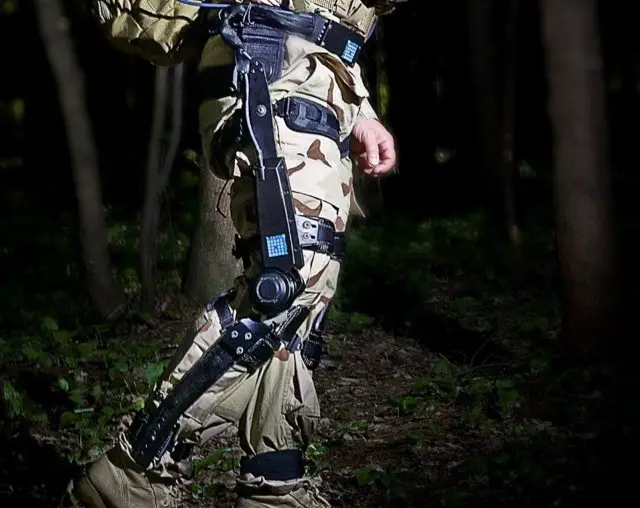Breaking news
SOFIC 2017: New Lockheed Martin Exoskeleton.
| 2017
 |
|||
|
Army Recognition Daily coverage and Web TV |
|||
|
Lockheed Martin at SOFIC 2017
|
|||
|
|
|||
|
|
|||
| SOFIC 2017: New Lockheed Martin Exoskeleton Helps Soldiers Carry Heavy Gear | |||
|
Their demanding missions often require soldiers to carry heavy equipment packs long distances over rough terrain, or up and down stairs and underground infrastructure in urban environments. Exhaustion and injury are frequently a consequence of these challenging operational scenarios. A new exoskeleton from Lockheed Martin offers a solution.
|
|||
|
|
|||
 FORTIS Knee Stress Release Device (K-SRD) is a computer-controlled exoskeleton (Photo Lockheed Martin) |
|||
|
|
|||
|
Using licensed DermoskeletonTM bionic augmentation technology, the FORTIS Knee Stress Release Device (K-SRD)TM is a computer-controlled exoskeleton that counteracts overstress on the lower back and legs and increases mobility and load-carrying capability. It boosts leg capacity for physically demanding tasks that require repetitive or continuous kneeling or squatting, or lifting, dragging, carrying or climbing with heavy loads.
FORTIS K-SRD helps soldiers climb and walk carrying heavy mission equipment loads by supporting the legs and boosting knee capacity. "FORTIS K-SRD features military-specification batteries that are approved for infantry use, improved control box ergonomics and faster actuators that generate more torque," said Keith Maxwell, FORTIS program manager at Lockheed Martin Missiles and Fire Control. "These system upgrades resulted from soldier feedback on the initial design." Sensors on the exoskeleton report the soldier's speed, direction and angle of movement to an on-board computer that drives electro-mechanical actuators at the knees. The exoskeleton delivers the right torque at the right time to assist knee flex and extension. FORTIS K-SRD ultimately reduces the energy needed to cross terrain, squat or kneel. These benefits are most noticeable when ascending or descending stairs or navigating inclined surfaces. Versions of the exoskeleton are also available for industrial workers and first responders who have to perform strenuous tasks in difficult environments. "For any mission that combines heavy man-portable gear and climbing, FORTIS K-SRD can enhance strength and endurance," Maxwell said. |


























